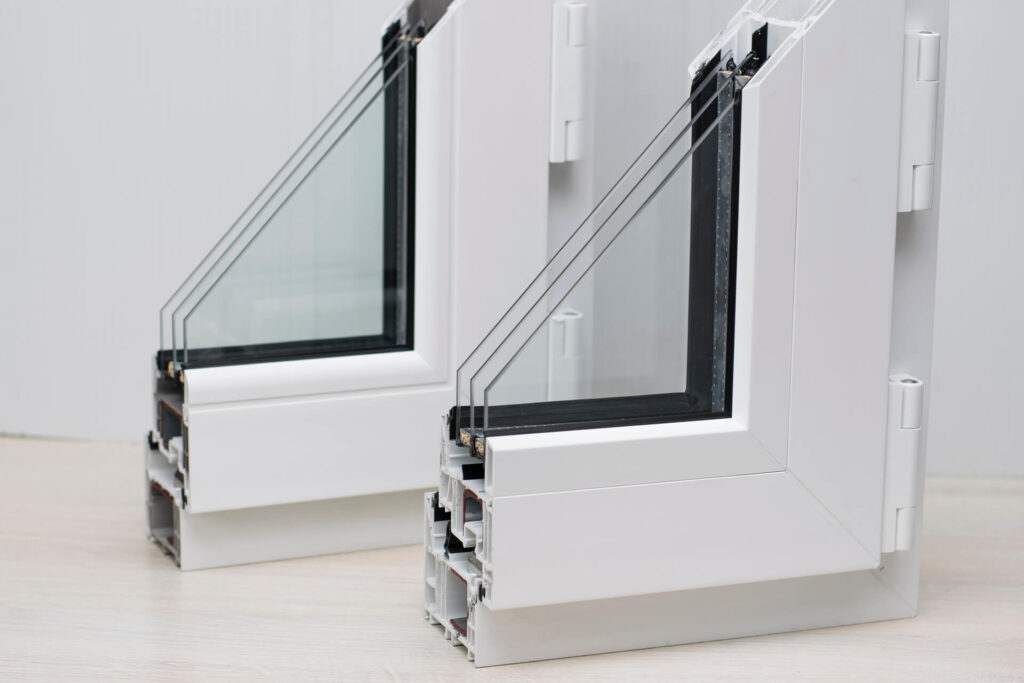Have you ever noticed foggy windows on a chilly morning or droplets of water collecting on the glass? Window condensation is a common issue in many homes, especially during colder months. While it may seem harmless at first, persistent condensation can lead to serious problems like mould growth, damage to window frames, and increased energy costs. This guide will walk you through effective strategies to prevent window condensation and protect your home.
Understanding Window Condensation
What Is Window Condensation?
Window condensation happens when warm, humid air inside your home meets the colder surface of your windows. The moisture in the air cools down rapidly and turns into water droplets. You’ve likely seen this same phenomenon in vehicles in the winter, on a cold drink in summer or in the bathroom after a hot shower.
Why Does It Happen?
Condensation occurs due to:
- High Indoor Humidity: Everyday activities like cooking, showering, and even breathing release moisture into the air.
- Temperature Differences: Warm indoor air hits the cold glass, causing condensation.
- Inadequate Ventilation: Without airflow, moisture builds up inside your home.
Types of Window Condensation
Not all condensation is the same. Here are the main types to watch for:
- Interior Condensation: Forms inside your windows due to high humidity levels indoors, typically occurs in winter.
- Exterior Condensation: Appears on the outside of windows when the outdoor air is more humid than the cool glass, typically occurs in warmer months.
- Between-Pane Condensation: Occurs between double or triple-glazed panes, often a sign of broken seals, and more common in older windows.
The Risks of Ignoring Window Condensation
Ignoring window condensation can lead to significant issues for your home. Over time, the persistent moisture can cause damage to window frames, leading to warping, rotting, or peeling paint as wooden frames absorb water. Accumulated water in window tracks can freeze during colder months, potentially making windows difficult to open or close and causing additional structural strain. This not only affects the appearance of your windows but can also weaken their overall integrity. Additionally, excess moisture provides the ideal conditions for mould and mildew growth, which can trigger respiratory problems, unpleasant odours, and other health hazards.
How to Prevent Window Condensation: Practical Tips
Dealing with window condensation doesn’t have to be a daunting task. With a few strategic changes and the right preventive measures, you can keep your windows clear and your home comfortable. Here are some practical tips to help you tackle the problem effectively.
Improve Ventilation
Good ventilation is one of the easiest and most effective ways to prevent window condensation. When humid air circulates properly, it doesn’t settle on your windows.
- Use Exhaust Fans: Make sure your kitchen and bathroom exhaust fans are functioning well, as these areas generate a lot of moisture during cooking and showering.
- Open Windows Periodically: Even in the winter, cracking your windows open for a few minutes a day can help release excess moisture and bring in fresh air.
- Install an HRV or Fresh Air Exchanger: A fresh air exchanger replaces stale indoor air with fresh outdoor air, while an HRV (Heat Recovery Ventilator) also conserves heat from outgoing air. HRVs are ideal for cold climates like Regina, as they improve ventilation, reduce humidity, and prevent condensation without losing indoor warmth.

Control Indoor Humidity
Excess humidity inside your home is one of the main culprits behind window condensation. Keeping humidity levels in check is key.
- Use Dehumidifiers: These devices are designed to pull moisture out of the air, creating a drier indoor environment and reducing condensation. Aim to keep indoor humidity below 40% during winter to reduce condensation risk without compromising comfort.
Upgrade or Treat Windows
Your windows play a crucial role in preventing condensation. Ensuring they are properly insulated and sealed can make a big difference.
- Upgrade Windows: Triple-pane, gas-filled, Energy Star windows with Low-E coating offer superior insulation, keeping interior glass warmer and reducing condensation risk.
- Apply Insulation Film: Adding a layer of insulation film to your windows is an affordable and effective way to reduce heat loss and prevent moisture buildup.
- Seal Windows with Caulking or Weather Stripping: Check for any gaps around your windows and seal them to prevent cold air from seeping in, which can lead to condensation.

Maintain Indoor Temperatures
Keeping your indoor temperature consistent helps balance the surface temperature of your windows and reduces the likelihood of condensation.
- Use Thermal Curtains or Blinds: These window treatments act as an additional layer of insulation, maintaining warmer window surfaces. Ensure they don’t obstruct vents or radiators to allow air circulation.
- Keep Consistent Heating Levels: Avoid turning your heating system on and off frequently. Instead, maintain a steady, comfortable temperature throughout the day.
- Optimize Furniture Placement: Ensure that furniture or curtains aren’t blocking vents or radiators, allowing warm air to circulate freely to your windows.
Conclusion
Tackling window condensation doesn’t have to be a constant battle. With a combination of better ventilation, humidity control, and insulation improvements, you can keep your windows clear and your home comfortable. Remember, small changes can lead to big results—and a more comfortable, healthier home is well worth the effort.
FAQs
Quick fixes include wiping windows with a dry cloth, using a portable dehumidifier, or briefly opening windows to release humid air. These solutions provide temporary relief but don’t address the root causes, like high humidity or poor ventilation.
It’s a good idea to inspect your windows annually. Look for signs of seal failure, like fogging between panes or draughts, and address any issues promptly.










